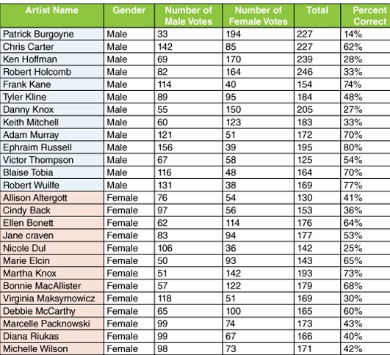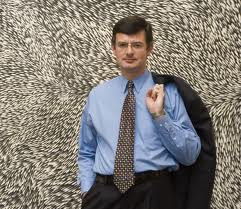So this week James Turrell was formally inducted into the American Academy of Arts and Letters, which gives me an occasion to post some pictures I took recently at one of his skyspace installations.
Before I experienced one for myself, people suggested checking out the YouTube videos of these installations — but I did not find any that did the Turrell piece justice.
To refresh: For these pieces, Turrell creates an enclosed room with an open space through which viewers see the sky. For a period surrounding each dawn and sunset, visitors sit through his choreographed interior light projections that affect the way we see the sky through the open ocular. Outside, for example, the sky may still be light blue, but inside, surrounded by articial light, it may appear to be purple.
The effect, as these photos — taken over the course of an hour, and therefore just a sampling — show, creates a picture not unlike Rothko paintings.
Read the photos from the top left to top right, middle left, then middle right, etc.
Much occurred in-between, of course. It’s a fascinating study in perception.
Works by all the recent inductees to the Academy will be on view there through June 12. They include Malcolm Morley and Cy Twombly.
Photo Credit: © Judith H. Dobrzynski

 Here’s the link to the
Here’s the link to the  The premise was this: Works by women artists were shown side by side with works by male artists of their chosing. Neither work was attributed on the wall labels, and viewers were asked to mark, on ballots, who they think made what — female or male.
The premise was this: Works by women artists were shown side by side with works by male artists of their chosing. Neither work was attributed on the wall labels, and viewers were asked to mark, on ballots, who they think made what — female or male.  So what did the Regents do?
So what did the Regents do?  Tomorrow is
Tomorrow is  Objects, in other words, can tell a story. But it’s also broader than that, which is what prompted my questions above. Think about it… and think about what your museum means to your community: a source of pride, a unifying factor, or — I hope not — a struggling institution?
Objects, in other words, can tell a story. But it’s also broader than that, which is what prompted my questions above. Think about it… and think about what your museum means to your community: a source of pride, a unifying factor, or — I hope not — a struggling institution?